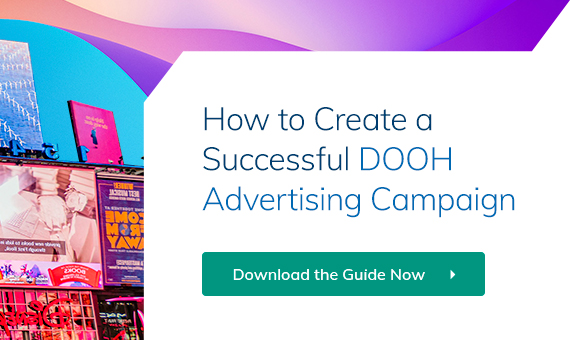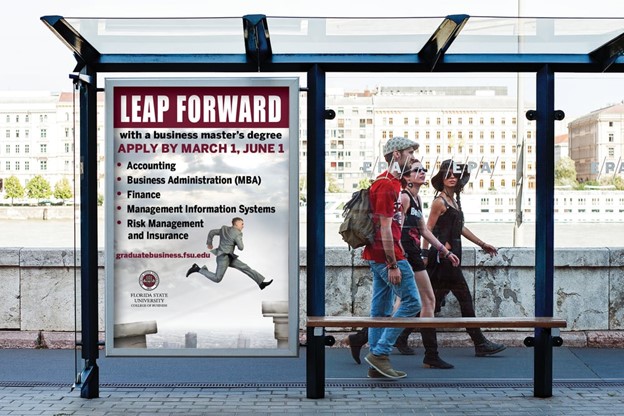
(Image source: info.mssmedia.com)
Education marketing is an essential component of any educational institution’s success.
As the education industry continues to evolve, so too do the strategies used to market and promote educational programs and services.
One of the emerging trends in education marketing is the use of Digital Out of Home (DOOH) advertising.
DOOH is a form of advertising that uses digital displays, such as billboards, screens in public places, and digital kiosks to reach a wide audience. It offers a new way for educational institutions to reach their target audience through visually engaging and dynamic content that can be customized to suit different locations and times of day.
In the context of education marketing, DOOH advertising can be used to promote a wide range of educational offerings, including online courses, degree programs, and workshops. It can also be used to attract new students to a campus, promote events, or build awareness around a specific program or initiative.
In this blog, we will highlight four ways to use DOOH to market educational institutions.
1. Campus Displays
Digital displays can be installed in key areas around the campus, such as student centers, libraries, and classrooms.
These displays can be used to promote campus events, student organizations, and other opportunities such as displays in student centers showcasing upcoming events, announcements and campus news or even on-campus wayfinding displays to guide visitors.
With DOOH, you can display dynamic advertisements that promote campus programs, events and achievements.
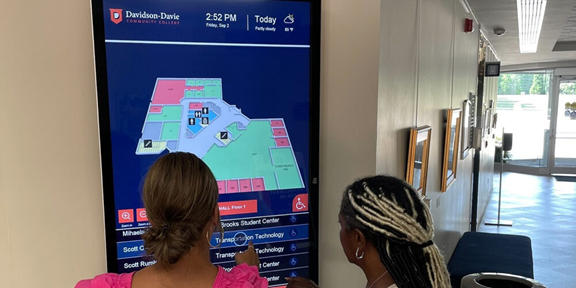
(Image source: campussafetymagazine.com)
2. Targeted Ads
DOOH technology can be used to target ads to specific audiences based on their demographics, interests, and location.
For example, ads can be displayed in nearby shopping centers, transit stations, or other public spaces where prospective students may be. If a college wants to target high school students who are considering higher education, they can place ads near high schools, libraries, and community centers.
DOOH ads can also be programmed to display at specific times of the day or week, when your target audience is most likely to be in the area. For example, a university may choose to display ads for their graduate programs during rush hour when working professionals are commuting.
Geofencing is yet another tool in programmatic DOOH that that allows educational institutions to target specific areas, such as neighborhoods or zip codes. This involves setting up a virtual boundary around a particular area, and then delivering advertising content to people who enter that area. It can be a highly effective way to reach potential students who live in a particular area.
For example, a vocational school might create a series of ads that highlight its job training programs. These ads could be geofenced around low-income neighborhoods where people are likely to be looking for job training and career advancement opportunities.
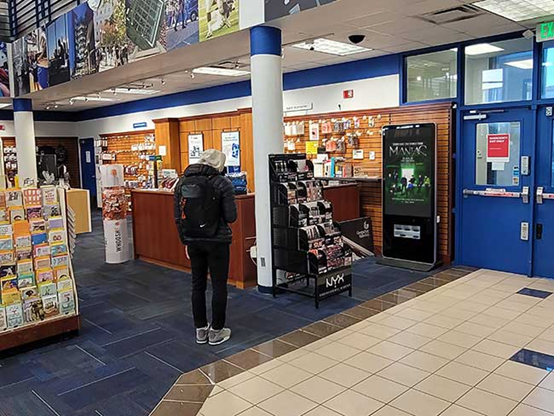
(Image source: bluelinemedia.com)
3. Virtual Tours
Digital screens and interactive displays can be used to create virtual tours of the campus. This can give prospective students and their families an immersive experience that can help them make a decision about attending the institution.
Let’s say the educational institution is a university. They could create a virtual tour of their campus and use DOOH advertising to promote it in key locations such as bus stops, shopping malls, and train stations. The DOOH ads could feature eye-catching graphics and information about the virtual tour, such as the dates and times it will be available. A QR code can also take the viewers to the university’s website or any call-to-action page.
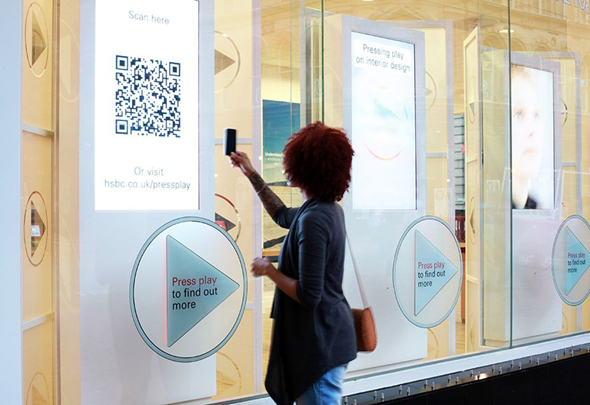
(Image source: inurfacemedia.co.uk)
By using DOOH advertising to promote the virtual tour, the university could reach a large audience in a cost-effective way. The virtual tour would also provide a unique and memorable experience that could set the university apart from its competitors.
4. Social Media Integration
DOOH can be integrated with social media platforms to create engaging experiences that encourage sharing and engagement.
For example, a digital display could display a live feed of social media posts related to the institution or display a hashtag that students can use to share their experiences, on social media.
Let’s say the institution is a university looking to attract prospective students to its campus. They could create a social media campaign, using platforms like Instagram and Twitter, that encourages current students to share photos and videos of their experiences on campus using a specific hashtag, like #MyUniLife.
The university could then use these user-generated posts in their DOOH advertising, which could be displayed in areas with high foot traffic, such as shopping malls or public transportation stations. The ads could feature a collage of photos and videos from the hashtag, along with a call-to-action to learn more about the university.
To take it a step further, the university could use geotargeting to display different ads in different locations.
For example, if the DOOH screen is located near a high school, the ad could feature photos and testimonials from recent high school graduates who chose to attend the university. Alternatively, if the screen is located in a busy urban area, the ad could highlight the university’s location and its proximity to popular attractions.
Overall, this approach leverages the power of social media to showcase the university’s brand and reputation, while also utilizing DOOH advertising to reach a wider audience in a variety of locations.
In conclusion, DOOH advertising can be a powerful tool for marketing education services to potential students.
By targeting the right audience, using eye-catching visuals and messaging, providing relevant and valuable information, and measuring and adjusting your campaigns, you can create effective DOOH marketing campaigns that drive enrolment and engagement.
By leveraging the power of digital displays and location-based targeting, institutions can reach a wider audience and build their brand awareness in an increasingly competitive educational landscape.
Get Started with Programmatic DOOH Today
With The Neuron, this all happens via single-click processes on a dashboard that’s easy to use and navigate. You can use the platform to track your campaign, with the freedom to edit the campaign times, target audience and message to optimise the performance of your campaigns. And of course, you can view in-depth analytics so you can adjust and optimize in real-time.
It couldn’t be easier to get started with programmatic DOOH. Start now!

